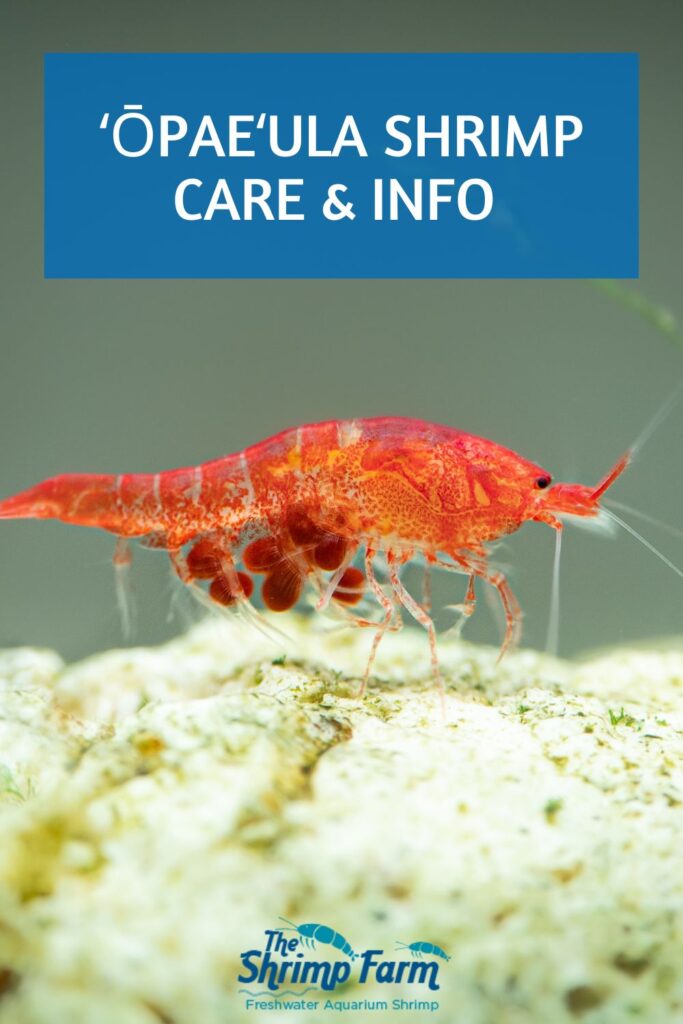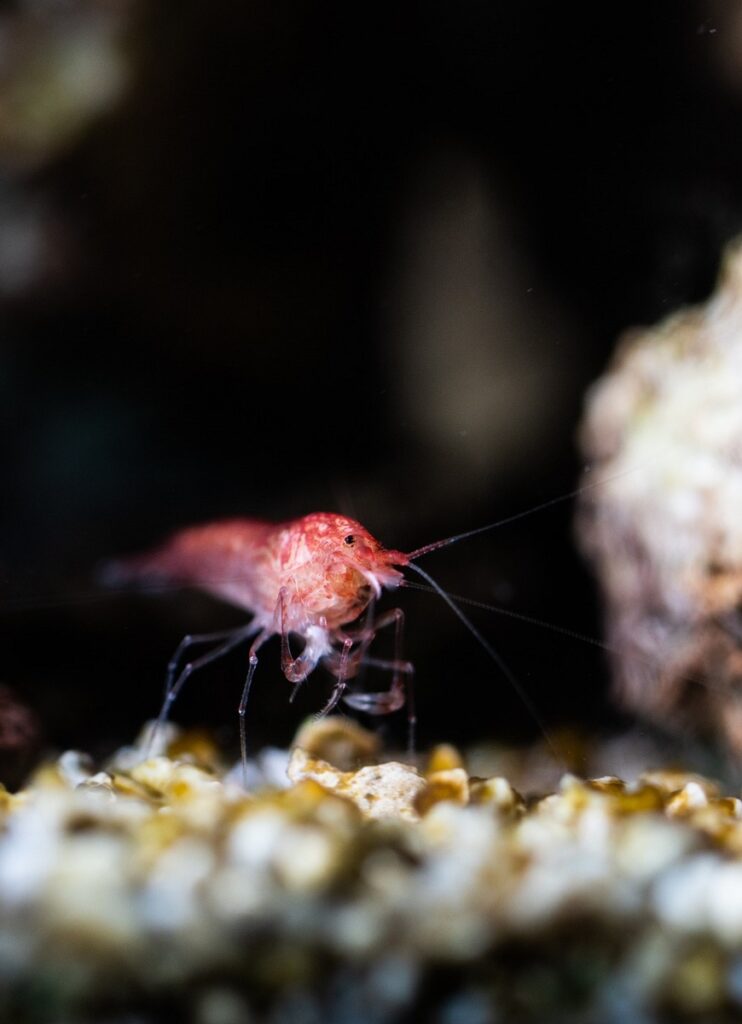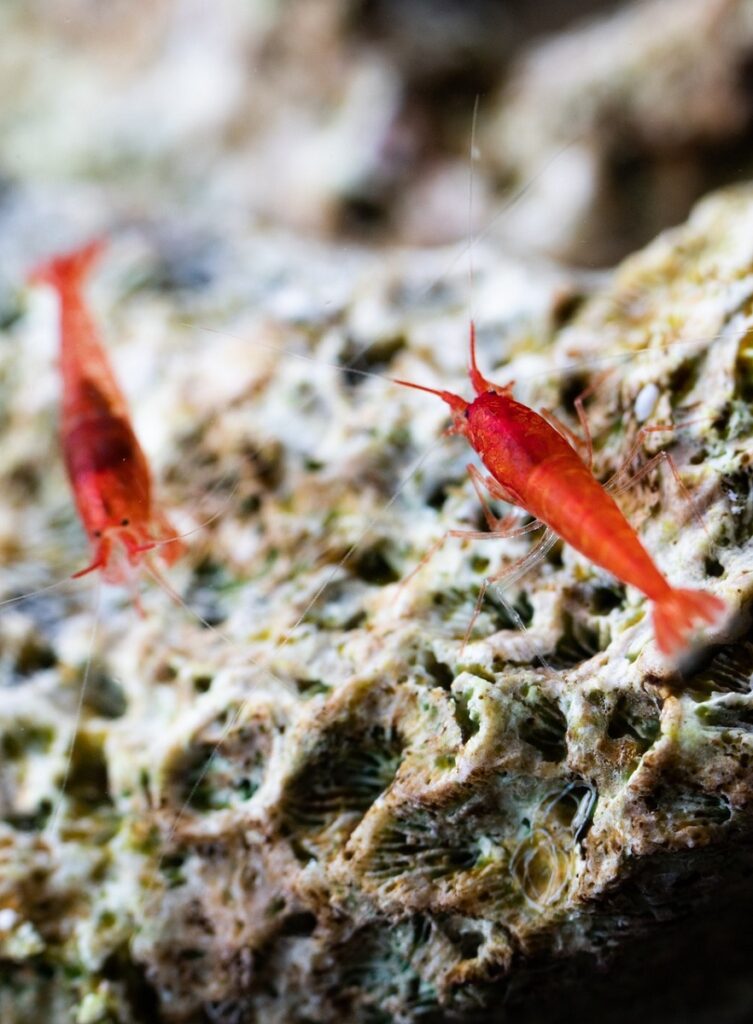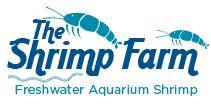Opae ula shrimp | Halocaridina rubra care & info
If you're looking for a new aquarium project and would like to go for something a little more unusual, we've got just the thing for you! Meet the ʻōpaeʻula (opae ula) shrimp, scientifically known as Halocaridina rubra. Although this one may look a little like your regular old red cherry shrimp, it's actually a unique, brackish-water species that only occurs on the Hawaiian islands.
Keep reading for everything you need to know about opae ula shrimp and keeping them in the aquarium!
| Scientific name | Halocaridina rubra |
| Common names | ʻŌpaeʻula* (opae ula), Hawaiian red shrimp, volcano shrimp |
| Difficulty level | Easy |
| Origin | Hawaii |
Table of Contents
Opae ula shrimp natural habitat & appearance
Natural habitat
The opae ula shrimp is naturally found on the Hawaiian islands of Maui, Kaho'olawe, O'ahu, Moloka'i, and Hawai'i (also known as the Big Island). Here, it inhabits a habitat completely unique when it comes to the shrimp we keep in our aquariums, most of which are from freshwater streams in Asia.
This species is an anchialine shrimp, meaning it's found in shallow pools that fluctuate with the tides as the result of an underground connection with the sea. In fact, some of these pools are actually located in lava or limestone caves themselves! Because the seawater is mixed with groundwater, the result is usually brackish.
Unfortunately, this shrimp and its unique habitat are under stress due to issues like urbanization, invasive species and harvesting for the aquarium trade. Luckily, the government of Hawaii has made efforts to protect its anchialine pools and their inhabitants, so let's hope they can be conserved.
Did you know? Opae ula shrimp found in the Waianapanapa Cave on Maui are the subject of legend: "Once upon a time, a Hawaiian princess named Popoalaea fled from her cruel husband, the chief Kakae. She hid on the ledge just inside the underwater entrance to this cave. A faithful serving maid sat across from her fanning the princess with a feather kahili, a symbol of royalty.
Noticing the reflection of the kahili in the water, the chief Kakae discovered Popoalaea’s hiding place and killed her. At certain times of the year, tiny red shrimp appear in the pool, turning the water red. Some say it is a reminder of the blood of the slain princess."
Your USA City Guide
Appearance
For beginning shrimp enthusiasts, it can be a bit difficult to tell apart an opae ula shrimp and the popular red cherry dwarf shrimp (Neocaridina davidi). Both are tiny shrimp characterized by their bright red coloration. However, there are a few visual differences:
- Clocking in at under an inch, Halocaridina rubra is smaller than Neocaridina davidi, which can grow to up to 1.5".
- Halocaridina rubra has a more rounded head and stump rostrum than the pointy-nosed Neocaridina davidi.
- Halocaridina rubra has smaller eyes than Neocaridina davidi.
- Halocaridina rubra females carry red eggs, while Neocaridina davidi eggs are yellow or greenish.
It's a little different to whether you're dealing with male or female opae ula shrimp since they're so small. However, the general guidelines for dwarf shrimp sexing roughly apply: females tend to be larger than males and brighter in color (although when stressed, they can temporarily become pale). Their belly plate is also more curved, and of course, they're the only ones that will carry eggs.
Setting up an opae ula shrimp aquarium
Ecosphere?
One of the reasons this obscure brackish shrimp was thrust into popularity is due to a concept called the Ecosphere. This is a brand name for a sealed sort of mini-aquarium meant to constitute a self-sustaining ecosystem. The idea is that light encourages algae growth in the sphere, and the algae in turn produce oxygen and food for the opae ula shrimp that inhabit it. Bacteria break down the waste the shrimp produce, which provides nutrients for the algae.
Although this idea sounds nice in theory, the shrimp in these spheres usually don't get close to their maximum lifespan, which can be a whopping 20 years. That's why we prefer setting up a dedicated regular aquarium so they can truly thrive.
Luckily, as you might have guessed, this is not exactly a fussy species. The pools that it has evolved to inhabit aren't always exactly hospitable places: they can be dirty, the salt percentage can vary greatly, and the sun can heat them to high temperatures. This means they're beginner-proof and easy to keep in the aquarium as long as you don't mind the chore of making brackish water.
Requirements
Opae ula shrimp don't need much. Pretty much any size aquarium works, although we find tanks of 2.5 gallons and up to be preferable. A filter isn't technically needed, but a little sponge filter to provide some water movement and to help establish a sturdy nitrogen cycle can be handy. Unless things get really chilly, installing an aquarium heater won't be necessary either.
You can use any sort of substrate or omit it altogether. Do make sure you place some décor in the tank, as it will help improve the surface area for the opae ula's favorite food (biofilm) to grow on. Due to the relatively high salinity these shrimp need, aquatic plants won't be an option, but you could look into growing decorative macroalgae like Chaetomorpha or Ulva (sea lettuce).
Water quality
If you've never had a brackish aquarium before, don't worry. It's not as complicated as maintaining a full marine tank and the only extra equipment you need is a simple salinity meter (known as a refractometer). All you have to do is make brackish water as follows:
- Use marine aquarium salt, not table salt. The latter won't have the trace minerals needed for a brackish tank.
- Add around 2 tablespoons of salt per gallon of dechlorinated water and stir or place an air stone in the bucket to dissolve.
- Test the salinity. It will likely fall in the appropriate range of 1.008-1.018 now.
When you do a water change, remember to check the salinity. Only top off water that evaporated with freshwater, because otherwise, the salt levels can slowly creep up.
Although these shrimp are very hardy, we still recommend waiting until the tank has cycled before introducing them for the best results. Frequent water changes aren't needed, but we'd still recommend doing a small one at least once or twice a month.
Salinity (specific gravity): 1.008-1.018
pH: 7.5-8.5
Temperature: 64-84 °F
GH: 4-14
KH: 0-10
Total Dissolved Solids: 100-1000
Tankmates
Tankmate options for opae ula shrimp are extremely limited, unfortunately. There aren't too many brackish fish and invertebrate species for sale in the aquarium hobby to begin with, and there definitely aren't many that won't jump at the opportunity to eat a 0.6" shrimp. Opae ula shrimp naturally occur alongside a larger shrimp species known as Metabetaeus lohena, but these need more space and are very rare in the aquarium hobby.
If the salinity in your tank isn't too high, there are some snail species that might work. Your most natural choice would be pipipi snails (Nerita picea), as these naturally inhabit the same pools as opae ulas.
Other options include the quilted Melania (Tarebia granifera) and Malaysian trumpet snail (Melanoides tuberculata). There are also some Nerite snails that may work: the horned Nerite (Clithon corona) can take an SG of up to around 1.010, while the American zebra nerite (Puperita pupa) likes mid-brackish to full seawater.
Opae ula shrimp diet
In the wild, Halocaridina rubra shrimp are microphagous: they feed on tiny particles and micro-organisms. The pools they inhabit often contain a layer of algae and cyanobacteria (naturally orange in color) that makes for a perfect opae ula buffet. Research indicates they're also attracted to insects floating at the surface and carrion.
Many sources report that opae ula shrimp in the aquarium never have to be fed. While this is oversimplifying things a bit, it's true that their metabolisms seem to be very slow and they really don't need much food. In most aquariums, you don't have to feed very often, especially if there's some good algae growth going on.
To make sure your shrimp don't go hungry, you could maintain a bucket with a few smooth rocks inside and a strong light pointed at it to cultivate green algae. Alternatively, a high-quality shrimp food should also work. Be sure not to overfeed; remove uneaten food after a few hours to prevent water quality issues.
Breeding opae ula shrimp
The opae ula shrimp is a lower-order shrimp. This means that, unlike something like a Neocaridina dwarf shrimp, it doesn't hatch as a fully developed mini copy of its parents. Instead, it has to pass through a larval stage first.
Some lower-order shrimp, like Amano shrimp, can be quite challenging to breed. Others, like ghost shrimp, are a good bit easier. Luckily for us, today's subject falls in the latter category, and it can actually produce offspring in the aquarium if conditions are right. It's not a quick process, since females mature slowly and don't become gravid often, but it doesn't require intervention on your part either.
Females will carry eggs for up to 38 days, after which the larvae (zoeae) hatch. They don't look much like shrimp and are extremely tiny, usually swimming to the surface and then hanging upside down or continuing to sink and then swim upward in a jerky manner. They're self-sufficient and will be left alone by the adults.
The larvae metamorphose after around a month, at which point they are fully developed tiny shrimp that can find their own food and forage alongside the rest of the colony.
Buying opae ula shrimp
Although these shrimp are relatively well-known in the aquarium hobby, they're not the easiest to find. Many aquarium stores don't bother with the brackish water required to maintain them! You could ask your local store to order a few in for you or try buying online.
Frequently asked questions
We recommend an aquarium of at least 2.5 gallons, preferably more. You can keep five opae ula shrimp (even more in larger tanks) per gallon without issue.



 Shrimp
Shrimp Fish
Fish Crab &
Crab & Plants
Plants Foods
Foods Snails
Snails


